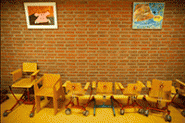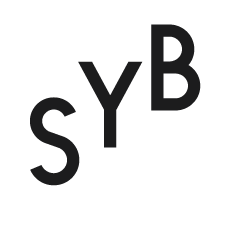29 October till 5 November 2013
A SINGLE EXPERIMENT
Brenda Tempelaar

A scientific experiment is generally understood as a test of a certain hypothesis, informed by a desire for definitive answers to articulated questions. But to establish proof, a scientist hardly ever relies on a single experiment. As a rule, he does not deal with isolated tests in relation to a theory, but rather with a set of experiments designed to produce knowledge that is not yet visible to him. Defined by doctor and biologist Ludwig Fleck (1896 – 1961) as ‘a system of experiments and controls’, the Denkkollektiv helps to explain the way ideas change over time. For the experimental system to be a success, Fleck stresses the importance of a well-defined hypothesis to be known in advance, for otherwise the procedure of the experiment cannot be limited and purposeful.[1]
At the constitution of an object of inquiry, stands a research object as a material entity or process. This object is inevitably vague because research objects embody what one does not yet know. When it emerges, says Bruno Latour, you cannot do better than explain what the new object is by repeating the list of its constitutive actions.[2] The conditions of the set of experiments embed the research object(s), and through that embracement they restrict and constrain them. This constraint is not necessarily a negative thing, as I believe that in order to do research of any kind, one has to be able to define an object of inquiry that automatically excludes others.
If a single experiment does not excite a scientist, can it be valuable for an artist? At Kunsthuis Syb three current residents of the Higher Institute for Fine Arts (HISK) in Ghent were invited to explore the value of an experiment in one week of isolation from their long-term projects. As we now know, a single experiment does not prove anything, and what I would like to propose otherwise, is to think of their time at Kunsthuis Syb not as a single experiment but as part of the set of events, that constitute the final work that the artists produce.
Although artists are in need of an object of inquiry, no matter how vague, the experiments through which they approach this object are not clearly delineated by a research question or a hypothesis. For that reason, it may not always be possible to distinguish between a successful experiment and a failed one. For Andrea Galiazzo (1983) this dichotomy of success and failure is at the center of his practice, that I would like to define as a process of non-production.
Trained a draftsman and a sculptor, Andrea Galiazzo simply told his hands to stop making ‘things’ but he found that – once obtained – certain abilities cannot be untaught. Having developed a useless skill, Galiazzo ended up trying to get rid of drawing by retracing the lines he drew as a child, or in other words; his decision to stop making anything bit him in the ass like a boomerang that one just cannot seem to throw away.
During his stay in Beetsterzwaag, Galiazzo revised his decision to stop making things by reproducing some of the childhood drawings that his mother saved for him. In this copy lies an interesting shift, in terms of concentration. It takes the artist about one hour to copy one of the 150 drawings that he probably made within five minutes as a child. It reminds me of the books with color-plates that I used to have. Like most children, I tried to finish the book as quickly as I could. As a result, the individual drawings lacked patience, and a considered choice of color schemes. It seems to be impossible for the grown up artist to copy the naïve gesture of his childhood drawings but it is exactly this chance of failure, to the extend of certainty, that Galiazzo is interested in, blurring the line between distinctions such as ‘good’ and ‘bad’. As the artist permits himself a policy of non-production as his output, it seems like he narrowed down the possible outcomes of his experiment to coincidental artistic successes and intentional non-production.
Would it have been possible for Galiazzo to present his line of production in the downstairs exhibition space of Kunsthuis Syb? Yes. I would have liked to see his copies pasted on the wall next to the childhood originals. But at the same time, for this experiment to go public, the artist still needs to straighten out a couple of things, starting with the decision whether to sign the drawings with the original date, or with the present date of production, in order to emphasize a transition.
So what constitutes a successful experiment in art? According to artist Mark Leckey, so much art is being produced that an artistic success is left numb, and the audience is deprived from its ability to be excited.[3] It is only natural for an artist to be pulled towards the excitement of non-production and to facilitate failure. Unfinished, disconnected and fragmented, the artists patiently carry their experiments along in the areas of the unseen, the private sphere, holding it plausible to implement them somewhere, for the long run. In the end, one experiment does not prove anything, and so all the artists can do is try and treat it carefully, like a capsule, and study what it is in line with or where it appeared from.
Like Andrea Galiazzo, Lola Lasurt Bachs (1983) chose to conduct her experiment in private realms. Lasurt Bachs came to SYB looking for a subject that could not be directly connected to her own identity, simply because it belongs to another time frame or cultural embedding. When she finds one of these subjects, she connects it to current settings so that transitions can become visible. The subjects that she is interested in vary from political transitions to educational systems and to the understanding of democracy in Spain.
During her stay in Kunsthuis Syb, Lasurt Bachs took the opportunity to pay visits to several schools in the rural surroundings of the house. Amongst other schools, Lasurt Bachs visited a Jenaplan school in Leeuwarden and found structures and behavior that differed from what she experienced in Spain, as a child. Lasurt Bachs became interested in the simple fact that parents get to choose how to educate their children. This is a very different take on education than the Spanish version of choice, where one simply distinguishes between public and private. Her main interest seems to be the spatial facilitation of the parent’s role, in the form of a coffee corner in the school. By pointing at a parallel, the artist has found an external subject that holds the power to reveal a condition of Spanish culture. ‘Sometimes I make objects, like photographs and paintings, but a lot of times I just like to point at something’ she explains.
From the moment she finds her subject, anything can happen and this is a central notion in the argument that Mark Leckey puts forward: this is the 21st century, and in this century, we move images around. We manipulate them, in order to redistribute them.[4] The only true process of production in Lasurt’s practice, or at least in this experiment, is the matter of finding subject, and pointing it out. The experiment that Lasurt conducted was to be compared to the planting of a seed into a field at night. In the daytime (which would be an exhibition in the future) one can suddenly encounter a full-grown plant, having no clue where it appeared from, or when it was put there.
Both Galiazzo’s – and Lasurt Bachs’ practice invite to rethink systems of education. Galiazzo does this by constructing a personal narrative that makes me think about art education and the disturbed equilibrium between their production-based programs and the common desire, pointed out by Mark Leckey, to move images around. Lasurt Bachs’ reflections center on primary education, but bring to the fore larger questions concerning democracy, cultural dependency and self-organization of a community. But the common denominator between Galiazzo and Lasurt Bachs does not limit itself to the subject matter. Also in terms of method, these artists have a similar affinity with narrowing down the object of inquiry, rather than demonstrating their artistic abilities.
A single experiment does not prove anything, but what about a mutual experiment? Given the common ground of the conducted experiments, I think that not presenting in public may have been an opportunity not taken. But if the long-term projects of these artists manage so easily to influence a single experiment, I have no concern that the experiments will prove themselves valuable in future presentations.

[1] Rheinberger, H.J (1997). Towards a history of epistemic things. Synthesizing Proteins in the Test Tube. California: Stanford University Press. P 27.
[2] Rheinberger, H.J (1997). P. 28
[3] From a Live Lecture with Mark Leckey In Collaboration with NTU Fine Art. 2 May 2013. www.youtube.com/watch?v=g5vCfhRJT0.
[4] From a Live Lecture with Mark Leckey In Collaboration with NTU Fine Art.
